Design, Analysis, and Experiment on a Novel Stick-Slip Piezoelectric Actuator with a Lever Mechanism
Abstract
1. Introduction
2. Design of the Actuator
2.1. Structure of the Actuator
2.2. Working Principle
2.3. Design and Analysis
3. Experiments and Results
3.1. Vibration Test of the Stator
3.2. Performance Test
3.3. Resolution Test
4. Conclusions
Author Contributions
Funding
Conflicts of Interest
Nomenclature
| U0 | Initial voltage |
| T | Cycle time |
| L | Length of the structure |
| W | Width of the structure |
| h | Distance from bottom of the structure to the location of piezoelectric stack |
| k1 | Stiffness of the long hinge |
| k2 | Stiffness of the flexure hinge |
| Fp | Output force of the piezoelectric stack |
| d33 | Piezoelectric coefficient of the piezoelectric stack |
| Up | Input voltage |
| kp | Stiffness of the piezoelectric stack |
| k11 | Equivalent tensile rigidity of the circle structure in the long hinge |
| k12 | Equivalent tensile rigidity of short beam in the long hinge |
| E | Young’s modulus |
| x | Displacement of the stator |
| xg | Displacement of the guide |
| Cs | Damping coefficients of the stator structure |
| Cp | Damping coefficients of the piezoelectric stack |
| Fa | Internal force of the piezoelectric stack and the stator structure |
| f | Friction force |
| ms | Mass of the stator structure |
| mg | Mass of the guide |
| mp | Mass of the piezoelectric stack |
| R | Resistance of the driving circuit |
| C | Capacitance of the piezoelectric stack |
| kamp | Amplification ratio of input voltage for the piezoelectric stack |
| ky | Stiffness of the stator structure in the y direction |
| Cy | Damping coefficients of the stator structure in the y direction |
| FN | Preload force from preload mechanism |
| N | Vertical force acting on the guide |
| vr | Relative velocity |
| μk | Kinetic friction coefficient |
| δv | Small velocity bound |
| r | Inner diameter of the long flexure hinge |
| t | Width of the long flexure hinge |
| rh | Diameter of the semi-circular flexure hinge |
References
- Zhang, J.; Huang, Y.; Zheng, Y. A feasibility study on timber damage detection using piezoceramic-transducer-enabled active sensing. Sensors 2018, 18, 1563. [Google Scholar] [CrossRef] [PubMed]
- You, Y.; Liao, W.; Zhao, D.; Ye, H.; Zhang, Y.; Zhou, Q.; Niu, X.; Wang, J.; Li, P.; Fu, D.; et al. An organic-inorganic perovskite ferroelectric with large piezoelectric response. Science 2017, 357, 306–309. [Google Scholar] [CrossRef] [PubMed]
- Gu, G.; Zhu, L.; Su, C.; Ding, H.; Fatikow, S. Modeling and control of piezo-actuated nanopositioning stages: A survey. IEEE Trans. Autom. Sci. Eng. 2016, 13, 313–332. [Google Scholar] [CrossRef]
- Xu, K.; Li, J.; Lv, X.; Wu, J.; Zhang, X.; Xiao, D.; Zhu, J. superior piezoelectric properties in potassium-sodium niobate lead-free ceramics. Adv. Mater. 2016, 28, 8519–8523. [Google Scholar] [CrossRef]
- Du, G.; Li, Z.; Song, G. A PVDF-based sensor for internal stress monitoring of a concrete-filled Steel tubular (CFST) column subject to impact loads. Sensors 2018, 18, 1682. [Google Scholar] [CrossRef]
- Xu, J.; Wang, C.; Li, H.; Zhang, C.; Hao, J.; Fan, S. Health monitoring of bolted spherical joint connection based on active sensing technique using piezoceramic transducers. Sensors 2018, 18, 1727. [Google Scholar] [CrossRef]
- Wang, Y.; Wang, L.; Cheng, T.; Song, Z.; Qin, F. Sealed piezoelectric energy harvester driven by hyperbaric air load. Appl. Phys. Lett. 2016, 108, 033902. [Google Scholar] [CrossRef]
- Ansari, R.; Oskouie, M.F.; Gholami, R.; Sadeghi, F. Thermo-electro-mechanical vibration of postbuckled piezoelectric Timoshenko nanobeams based on the nonlocal elasticity theory. Compos. Part B Eng. 2016, 89, 316–327. [Google Scholar] [CrossRef]
- Wang, Z.; Chen, D.; Zheng, L.; Huo, L.; Song, G. Influence of axial load on electromechanical impedance (EMI) of embedded piezoceramic transducers in steel fiber concrete. Sensors 2018, 18, 1782. [Google Scholar] [CrossRef]
- Xu, K.; Deng, Q.; Cai, L.; Ho, S.; Song, G. Damage detection of a concrete column subject to blast loads using embedded piezoceramic transducers. Sensors 2018, 18, 1377. [Google Scholar] [CrossRef]
- Lu, X.L.; Zhou, S.Q.; Zhao, C.S. Finite element method analyses of ambient temperature effects on characteristics of piezoelectric motors. J. Intell. Mater. Syst. Struct. 2014, 25, 364–377. [Google Scholar] [CrossRef]
- Lu, X.L.; Hu, J.H.; Zhang, Q.; Yang, L.; Zhao, C.S.; Vasiljev, P. An ultrasonic driving principle using friction reduction. Sens. Actuators A Phys. 2013, 199, 187–193. [Google Scholar] [CrossRef]
- Li, X.; Zhou, S. A novel piezoelectric actuator with a screw-coupled stator and rotor for driving an aperture. Smart Mater. Struct. 2016, 25, 035027. [Google Scholar] [CrossRef]
- Liu, Y.; Wang, Y.; Liu, J.; Xu, D.; Li, K.; Shan, X.; Deng, J. A four-feet walking-type rotary piezoelectric actuator with minute step motion. Sensors 2018, 18, 1471. [Google Scholar] [CrossRef] [PubMed]
- Cho, B. Performance evaluation of switching amplifier in micro-positioning systems with piezoelectric Actuator. Trans. Korean Inst. Power Electron. 2009, 14, 62–71. [Google Scholar]
- Huang, H.; Zhao, H.W.; Fan, Z.Q.; Zhang, H.; Ma, Z.C.; Yang, Z.J. Analysis and experiments of a novel and compact 3-DOF precision positioning platform. J. Mech. Sci. Technol. 2013, 27, 3347–3356. [Google Scholar] [CrossRef]
- Yung-Tien, L.; Higuchi, T. Precision positioning device utilizing impact force of combined piezo-pneumatic actuator. IEEE/ASME Trans. Mechatron. 2001, 6, 467–473. [Google Scholar] [CrossRef]
- Presas, A.; Egusquiza, E.; Valero, C.; Valentin, D.; Seidel, U. Feasibility of using PZT actuators to study the dynamic behavior of a rotating disk due to rotor-stator interaction. Sensors 2014, 14, 11919–11942. [Google Scholar] [CrossRef]
- Yu, H.; Quan, Q.; Tian, X.; Li, H. Optimization and analysis of a u-shaped linear piezoelectric ultrasonic motor using longitudinal transducers. Sensors 2018, 18, 809. [Google Scholar] [CrossRef]
- Chen, X.F.; Huang, W.Q.; Luo, J.Q.; Xu, J.J. design of a kind of non-resonant linear piezoelectric motor. Appl. Mech. Mater. 2014, 459, 418–423. [Google Scholar] [CrossRef]
- Li, H.L.; Yin, W.; Qing, H.W.; Liang, Y. A double-foot linear piezoelectric motor. Chin. Mech. Eng. 2014, 25, 2719–2723. [Google Scholar]
- Li, J.; Huang, H.; Zhao, H. A piezoelectric-driven linear actuator by means of coupling motion. IEEE Trans. Ind. Electron. 2018, 65, 2458–2466. [Google Scholar] [CrossRef]
- Wang, S.; Rong, W.; Wang, L.; Pei, Z.; Sun, L. A novel inchworm type piezoelectric rotary actuator with large output torque: Design, analysis and experimental performance. Precis. Eng. 2018, 51, 545–551. [Google Scholar] [CrossRef]
- Tchakui, M.V.; Woafo, P. Dynamics of three unidirectionally coupled autonomous duffing oscillators and application to inchworm piezoelectric motors: effects of the coupling coefficient and delay. Chaos Interdiscip. J. Nonlinear Sci. 2016, 26, 103118. [Google Scholar] [CrossRef] [PubMed]
- Ceponis, A.; Mazeika, D. An inertial piezoelectric plate type rotary motor. Sensor Actuators A Phys. 2017, 263, 131–139. [Google Scholar] [CrossRef]
- Liu, L.; Ge, W.; Meng, W.; Hou, Y.; Zhang, J.; Lu, Q. New design for inertial piezoelectric motors. Rev. Sci. Instrum. 2018, 89, 033704. [Google Scholar] [CrossRef]
- Ma, Y.; Shekhani, H.; Yan, X.; Choi, M.; Uchino, K. Resonant-type inertial impact motor with rectangular pulse drive. Sensor Actuators A phys. 2016, 248, 29–37. [Google Scholar] [CrossRef]
- Chu, C.L.; Fan, S.H. A novel long-travel piezoelectric-driven linear nanopositioning stage. Precis. Eng. 2006, 30, 85–95. [Google Scholar] [CrossRef]
- Nguyen, H.X.; Edeler, C.; Fatikow, S. Modeling of piezo-actuated stick-slip micro-drives: An overview. Adv. Sci. Technol. 2012, 81, 39–48. [Google Scholar] [CrossRef]
- Zhang, Z.M.; An, Q.; Li, J.W.; Zhang, W.J. Piezoelectric friction-inertia actuator-a critical review and future perspective. Int. J. Adv. Manuf. Technol. 2012, 62, 669–685. [Google Scholar] [CrossRef]
- Hunstig, M.; Hemsel, T.; Sextro, W. Stick–slip and slip–slip operation of piezoelectric inertia drives. Part I: Ideal excitation. Sensors Actuators A Phys. 2013, 200, 90–100. [Google Scholar] [CrossRef]
- Meng, Q.; Li, Y.; Xu, J. A novel analytical model for flexure-based proportion compliant mechanisms. Precis. Eng. 2014, 38, 449–457. [Google Scholar] [CrossRef]
- Tian, Y.; Shirinzadeh, B.; Zhang, D.; Liu, X.; Chetwynd, D. Design and forward kinematics of the compliant micro-manipulator with lever mechanisms. Precis. Eng. 2009, 33, 466–475. [Google Scholar] [CrossRef]
- Simu, U.; Johansson, S. Analysis of quasi-static and dynamic motion mechanisms for piezoelectric miniature robots. Sensor Actuators A Phys. 2006, 132, 632–642. [Google Scholar] [CrossRef]
- Chen, X.F.; Wang, Y.; Sun, M.X.; Hunag, W.Q. Linear piezoelectric stepping motor with broad operating frequency. Trans. Nanjing Univ. Aeronaut. Astronaut. 2015, 32, 137–142. [Google Scholar]
- Jalili, H.; Salarieh, H.; Vossoughi, G. Study of a piezo-electric actuated vibratory micro-robot in stick-slip mode and investigating the design parameters. Nonlinear Dynam. 2017, 89, 1927–1948. [Google Scholar] [CrossRef]
- Kim, S.H.; Kim, S. A precision linear actuator using piezoelectrically driven friction force. Mechatronics 2001, 11, 969–985. [Google Scholar] [CrossRef]
- Sun, M.; Huang, W.; Wang, Y.; Lu, Q.; Su, Z. Research on a novel non-resonant piezoelectric linear motor with lever amplification mechanism. Sensor Actuators A Phys. 2017, 261, 302–310. [Google Scholar] [CrossRef]
- Li, J.; Zhou, X.; Zhao, H.; Shao, M.; Li, N.; Zhang, S.; Du, Y. Development of a novel parasitic-type piezoelectric actuator. IEEE/ASME Trans. Mechatron. 2017, 22, 541–550. [Google Scholar] [CrossRef]
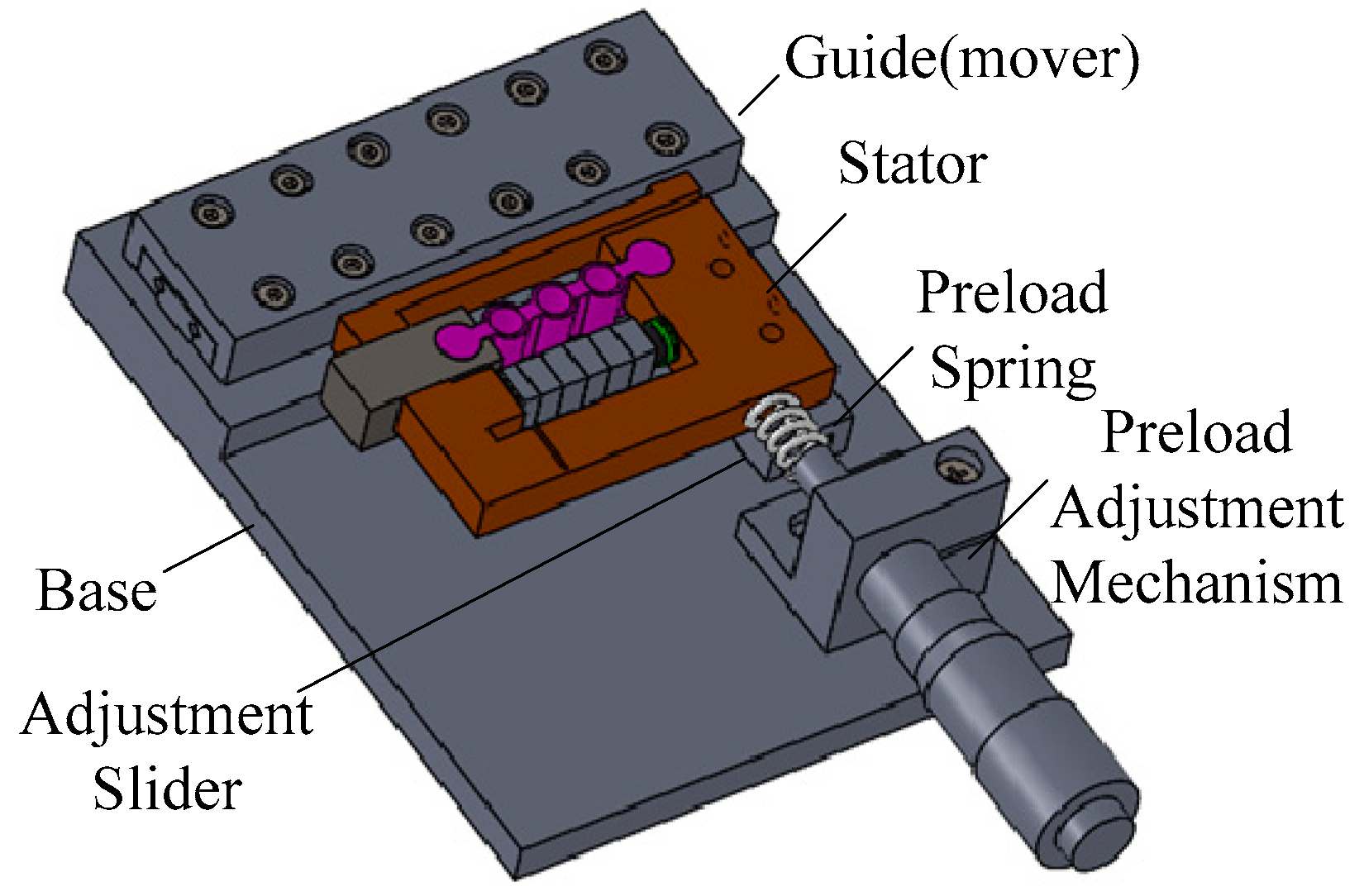

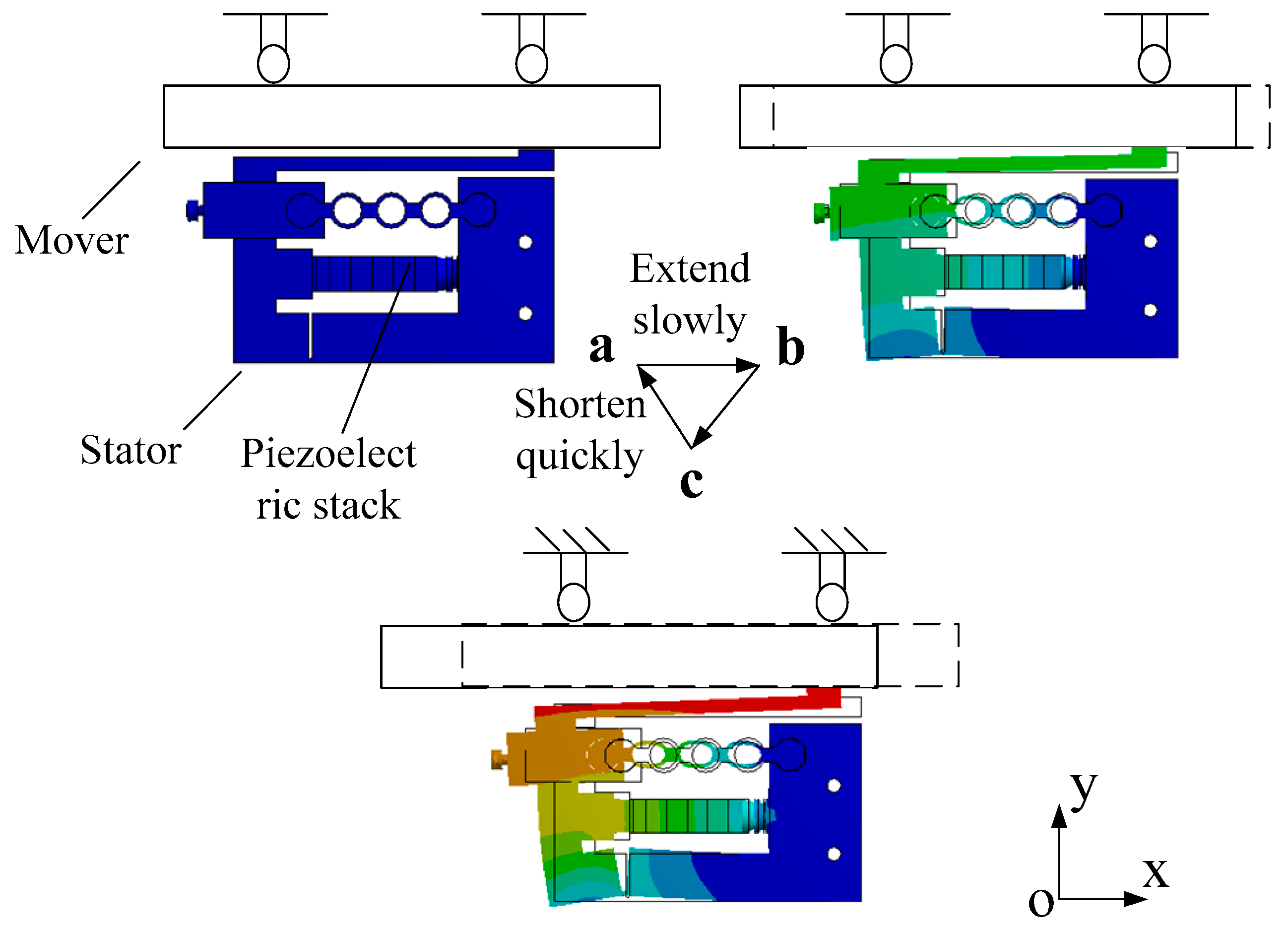
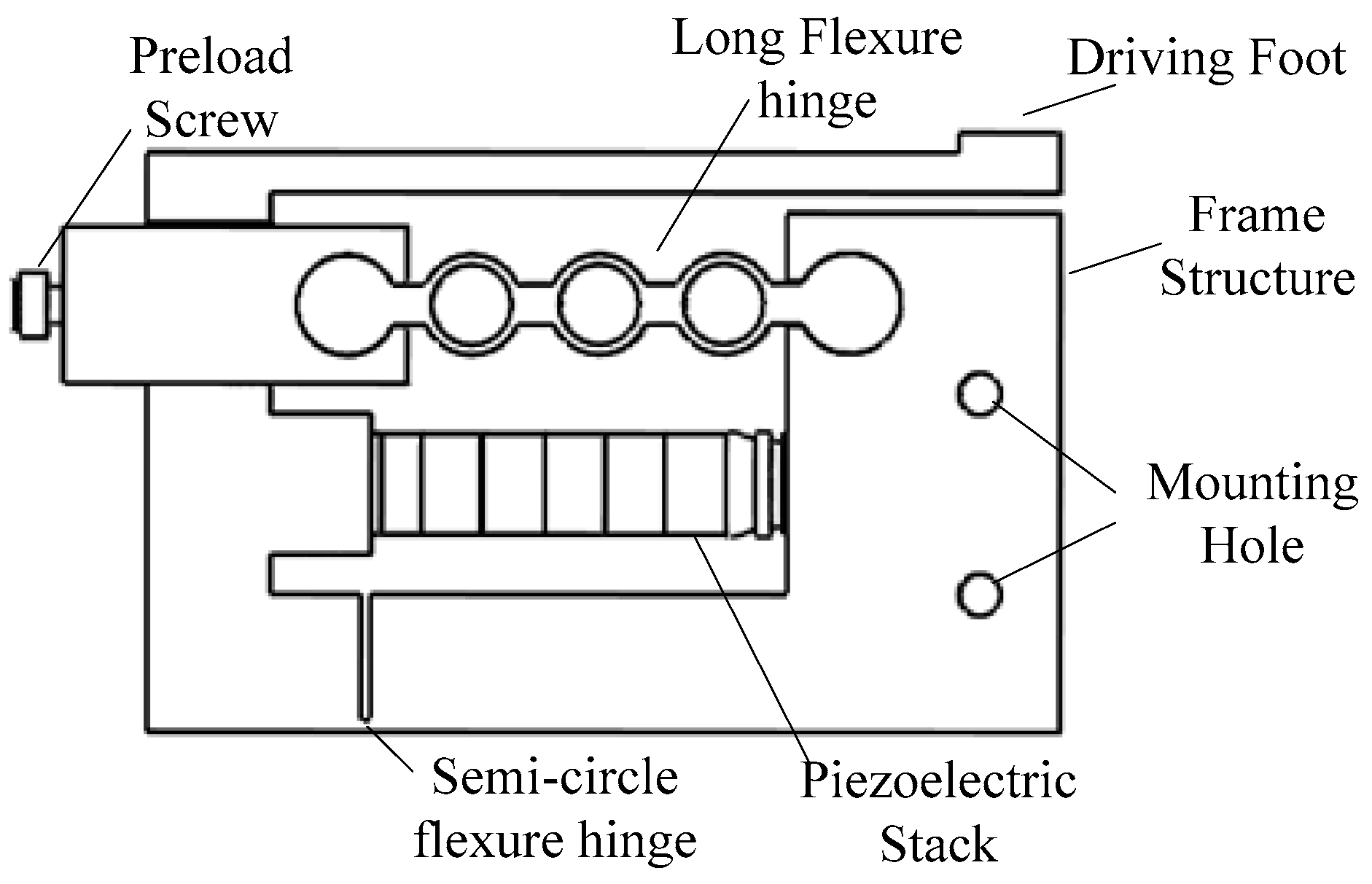
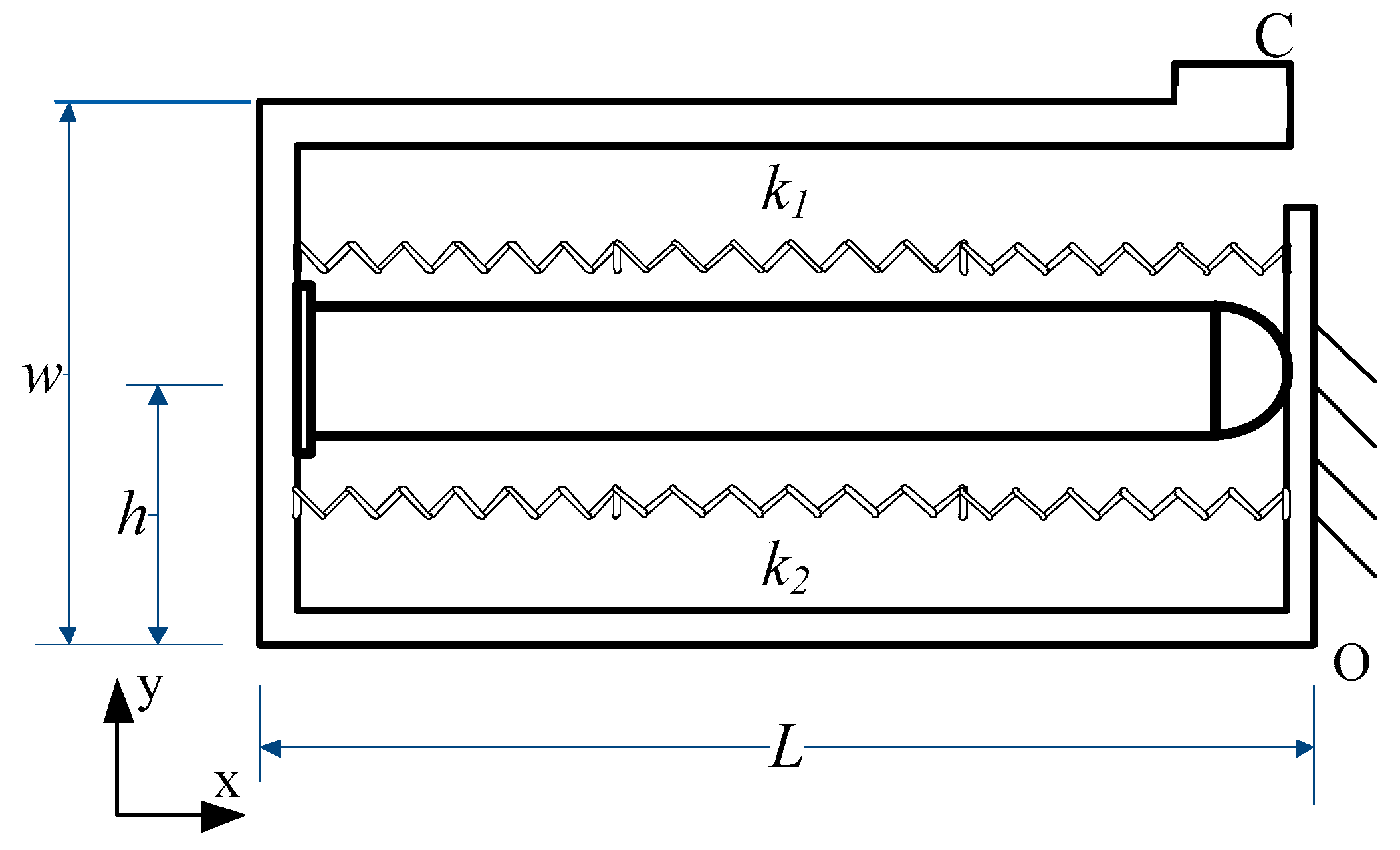

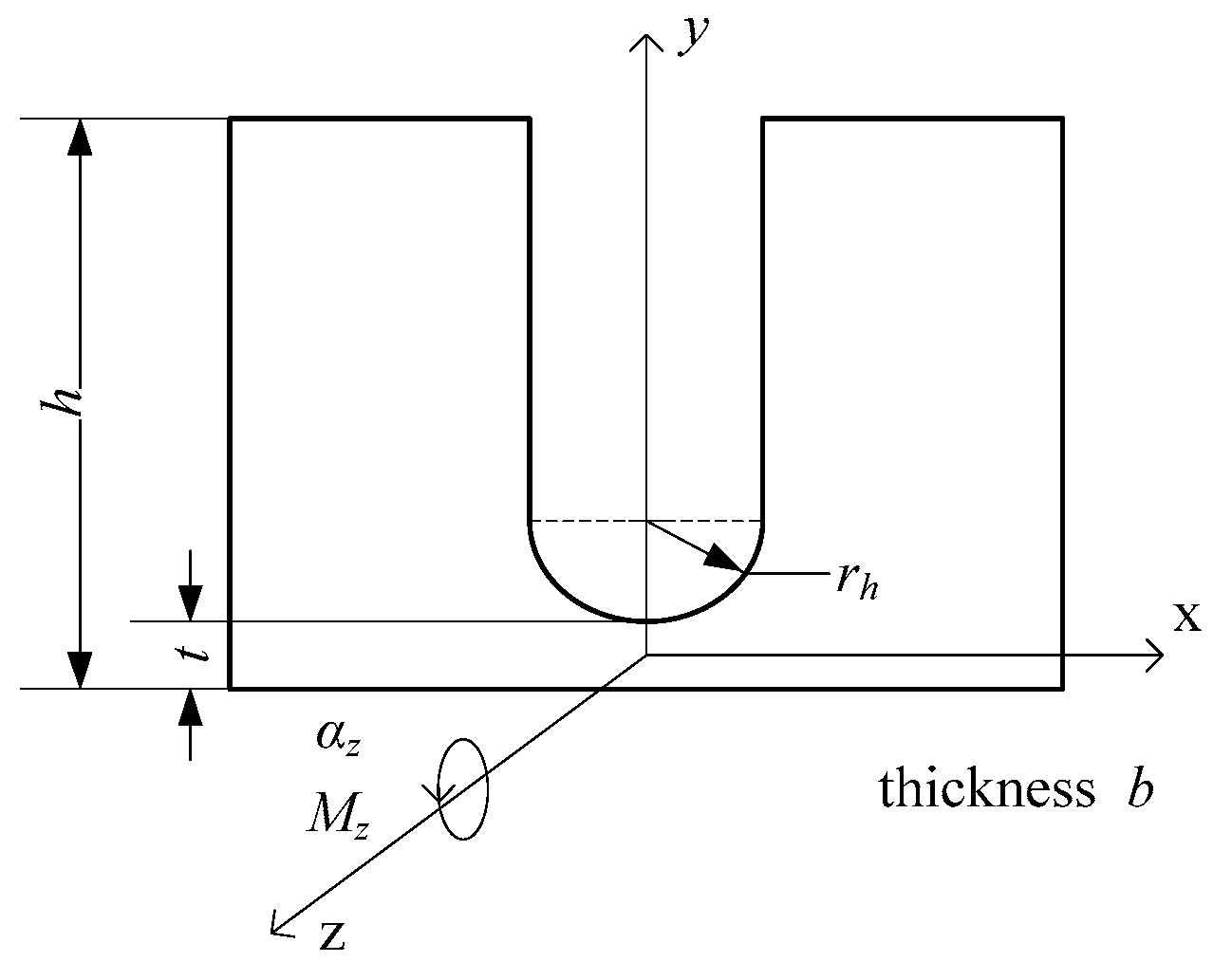
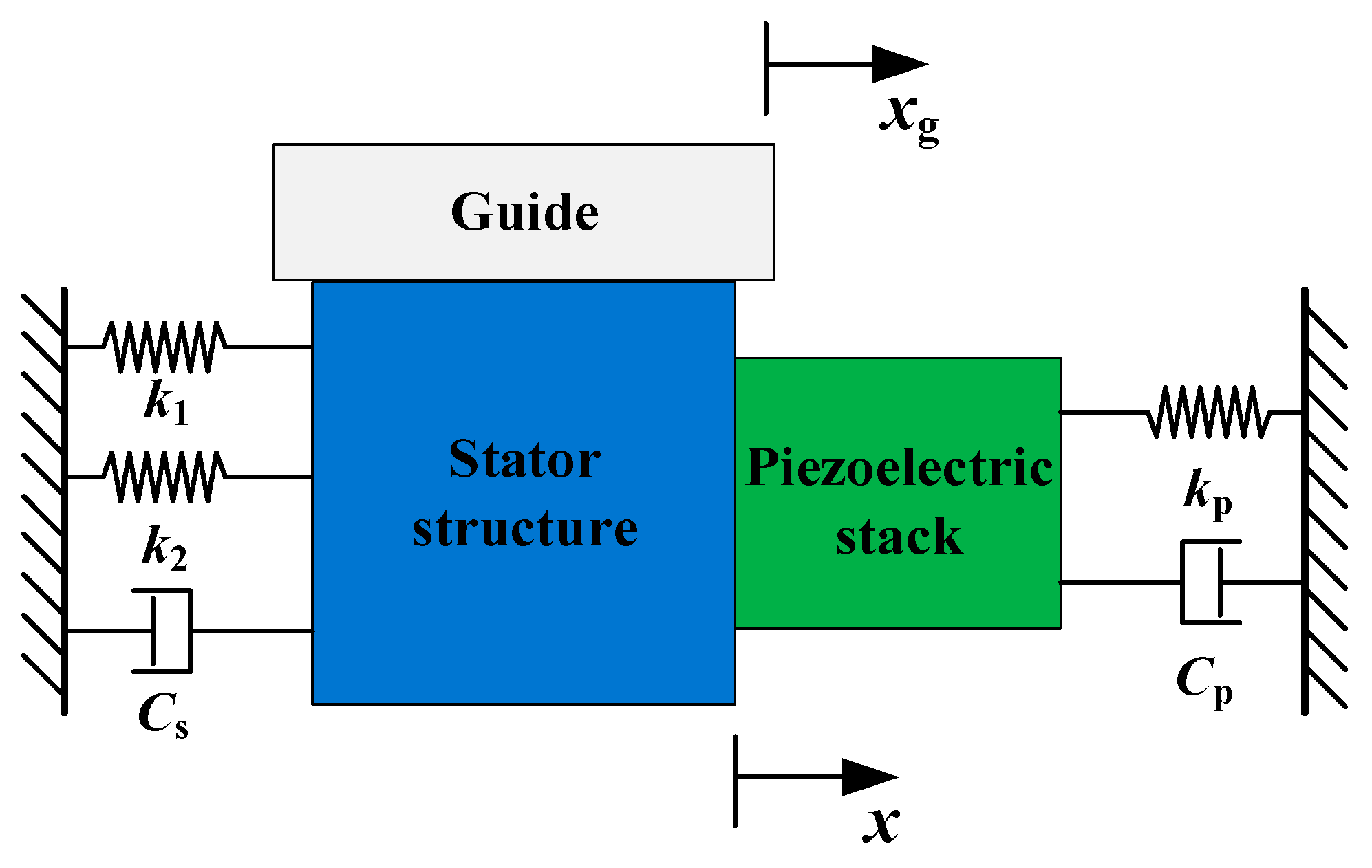

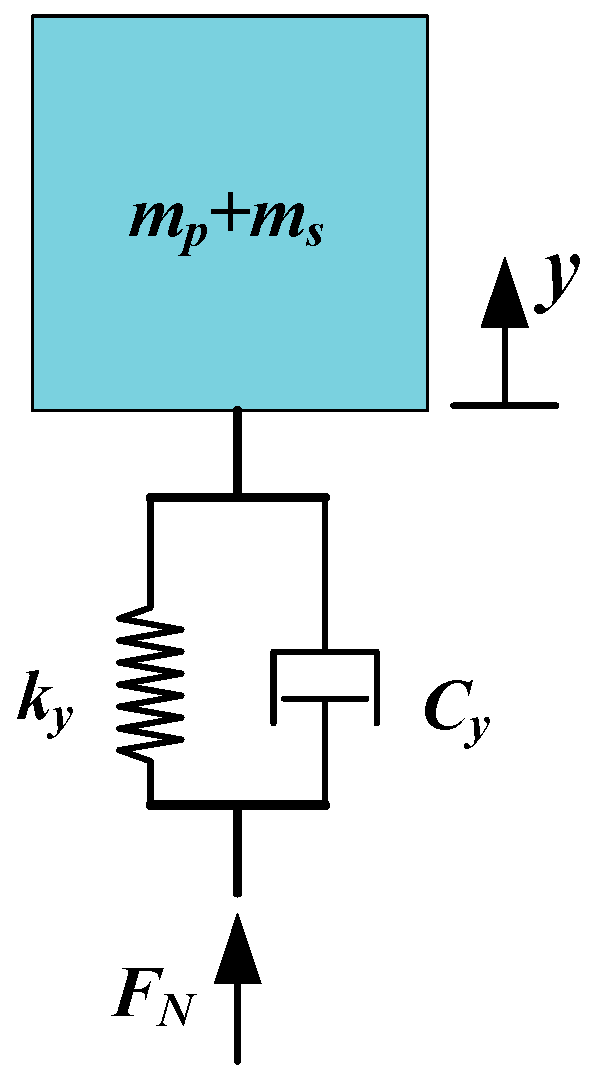

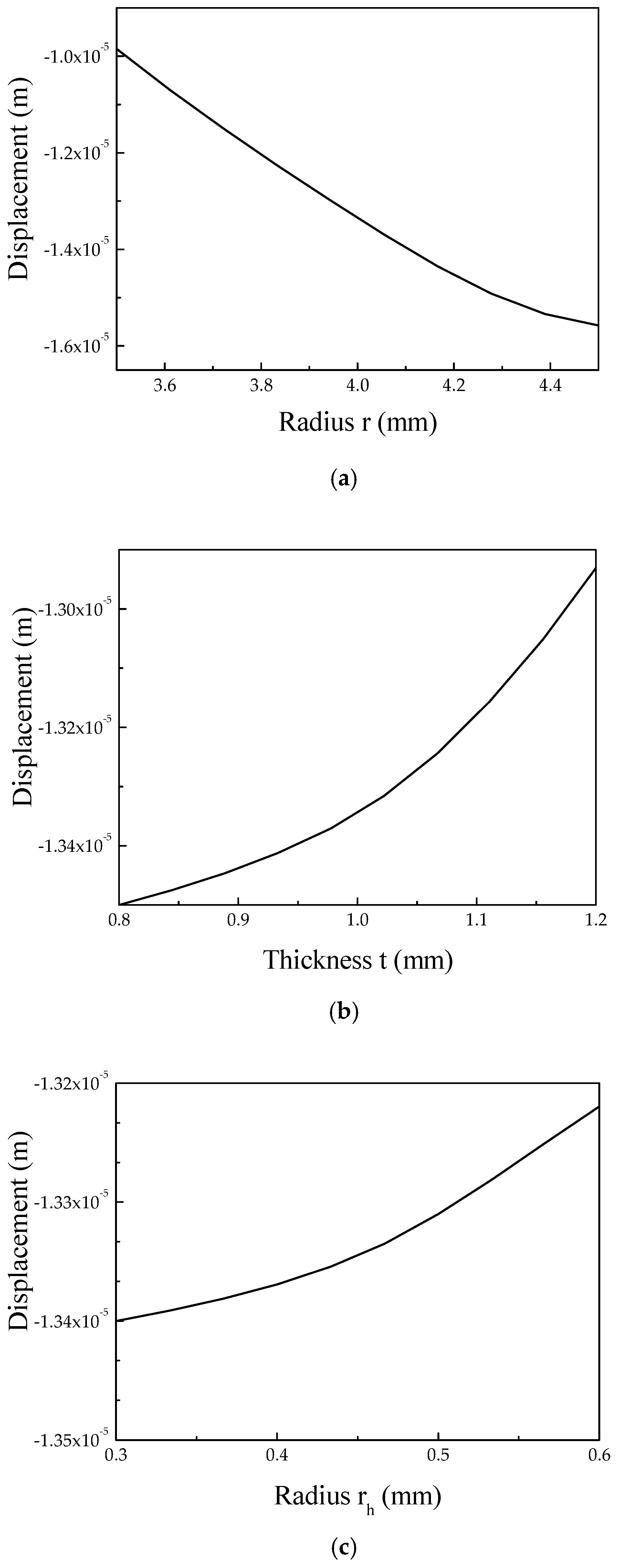
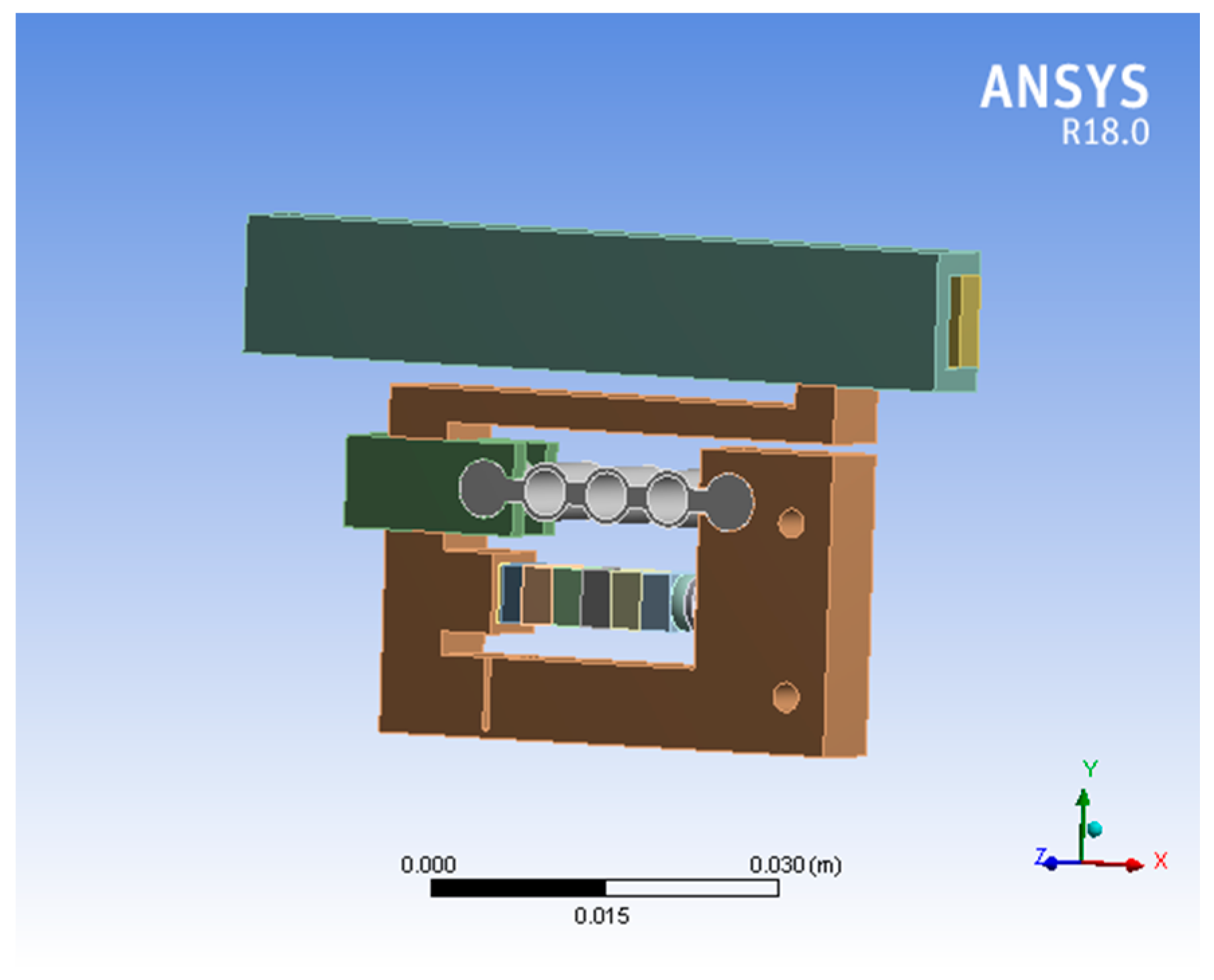
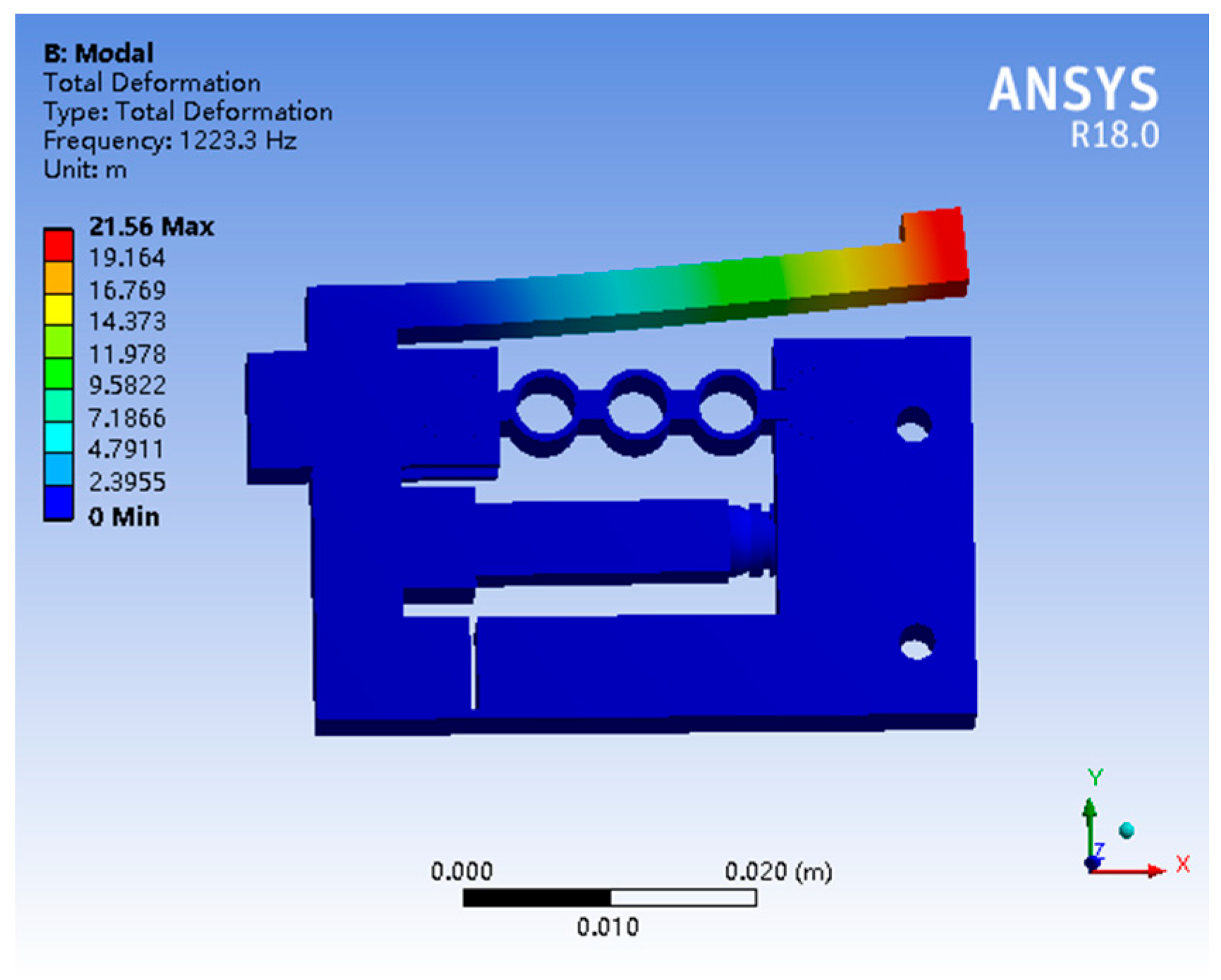

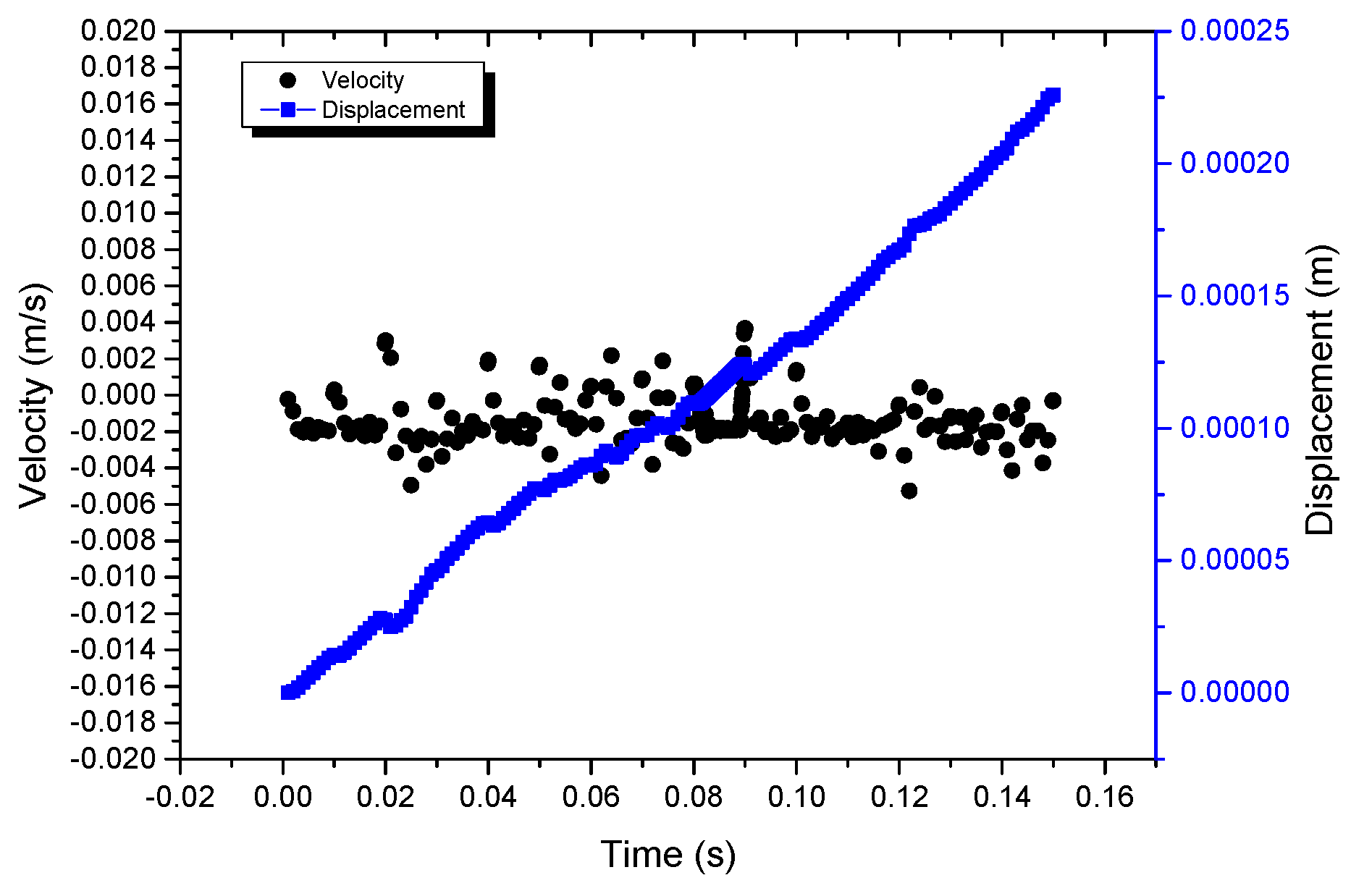


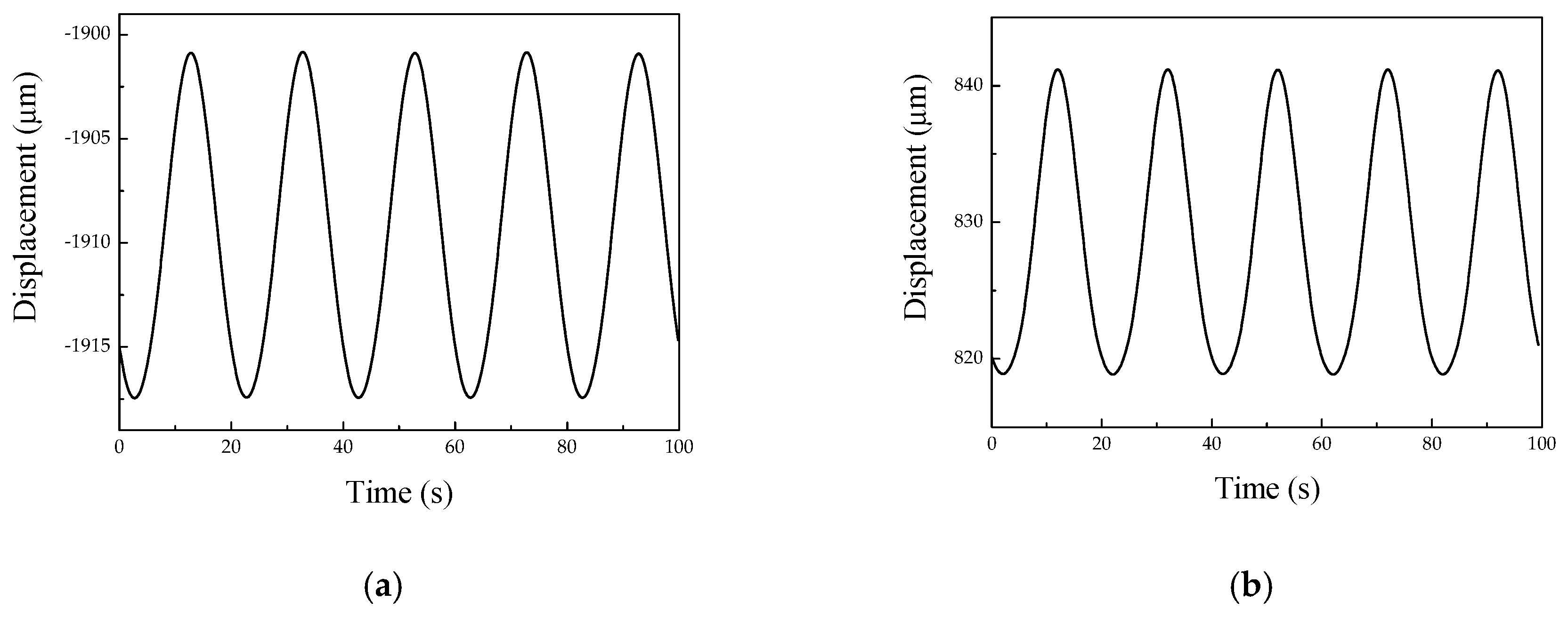

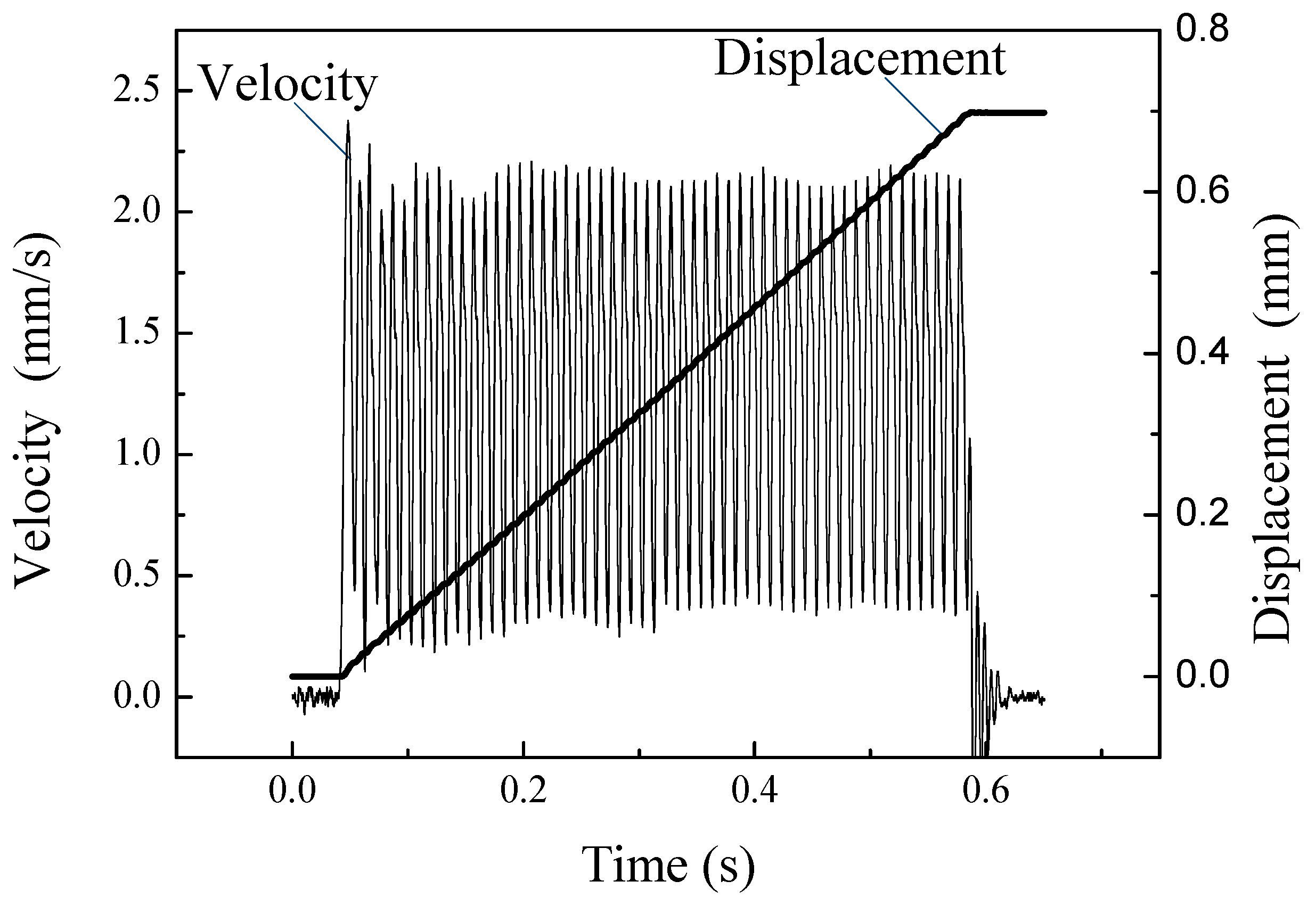
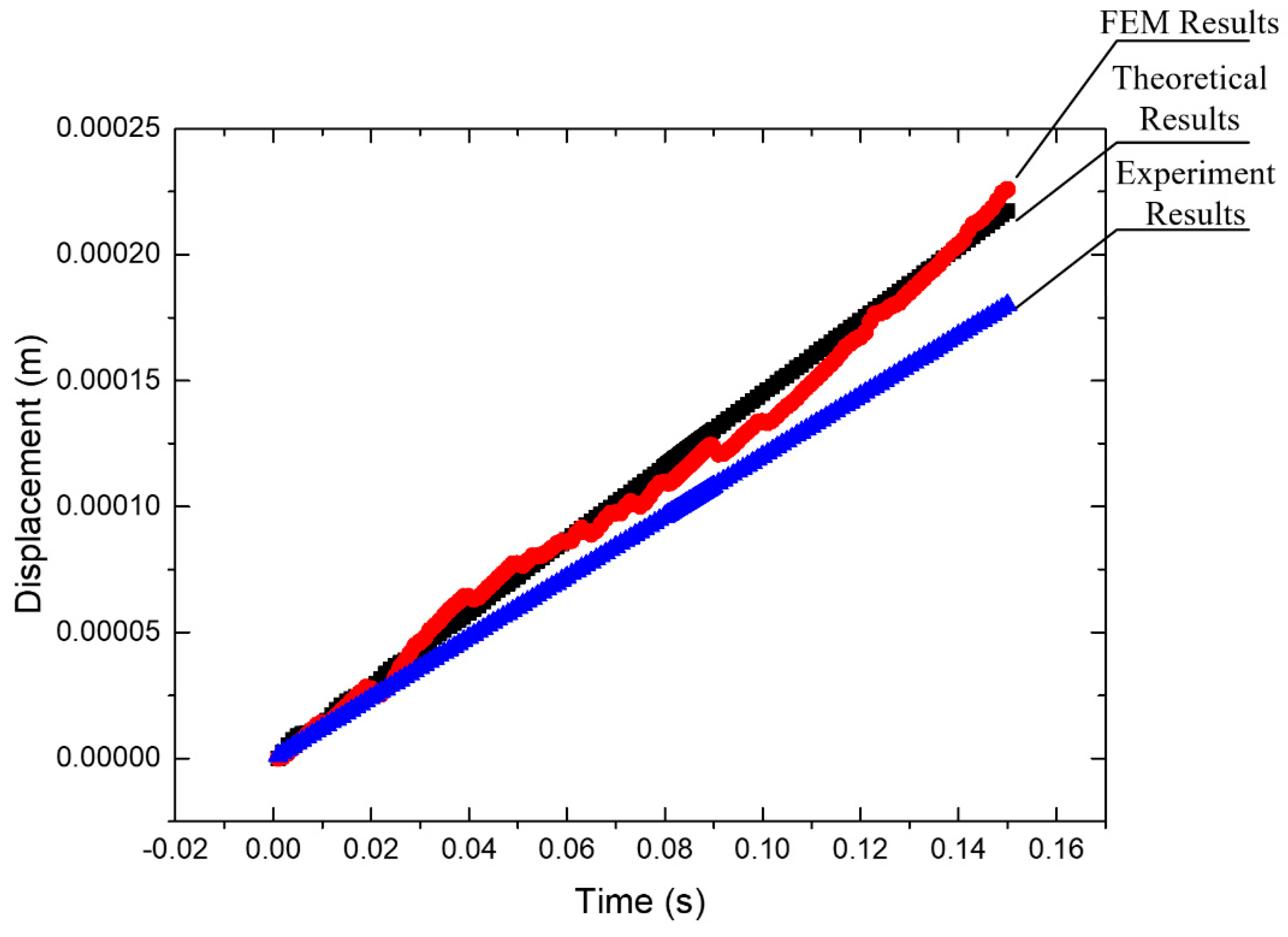

© 2019 by the authors. Licensee MDPI, Basel, Switzerland. This article is an open access article distributed under the terms and conditions of the Creative Commons Attribution (CC BY) license (http://creativecommons.org/licenses/by/4.0/).
Share and Cite
Huang, W.; Sun, M. Design, Analysis, and Experiment on a Novel Stick-Slip Piezoelectric Actuator with a Lever Mechanism. Micromachines 2019, 10, 863. https://doi.org/10.3390/mi10120863
Huang W, Sun M. Design, Analysis, and Experiment on a Novel Stick-Slip Piezoelectric Actuator with a Lever Mechanism. Micromachines. 2019; 10(12):863. https://doi.org/10.3390/mi10120863
Chicago/Turabian StyleHuang, Weiqing, and Mengxin Sun. 2019. "Design, Analysis, and Experiment on a Novel Stick-Slip Piezoelectric Actuator with a Lever Mechanism" Micromachines 10, no. 12: 863. https://doi.org/10.3390/mi10120863
APA StyleHuang, W., & Sun, M. (2019). Design, Analysis, and Experiment on a Novel Stick-Slip Piezoelectric Actuator with a Lever Mechanism. Micromachines, 10(12), 863. https://doi.org/10.3390/mi10120863





